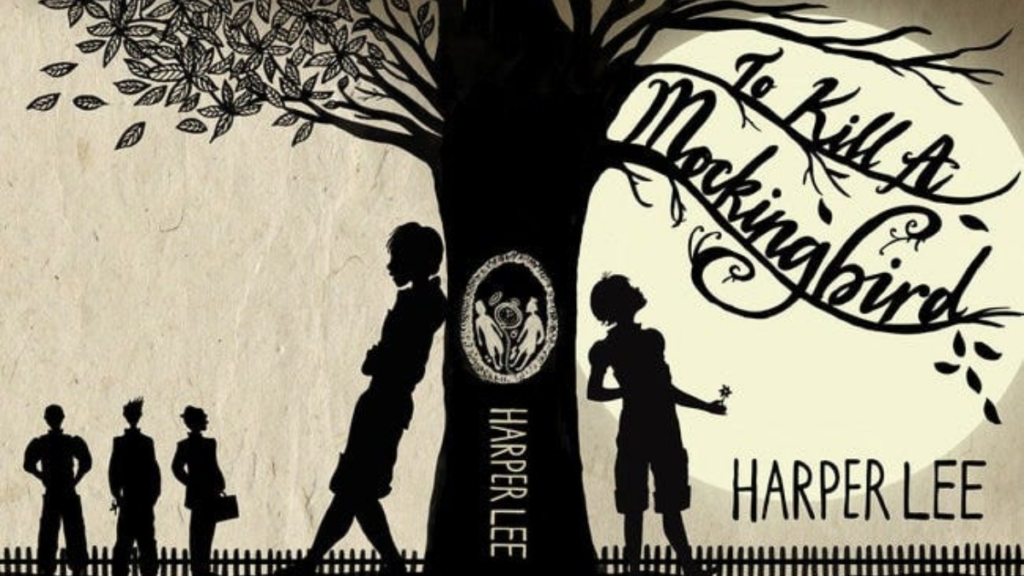The 1962 film ‘To Kill a Mockingbird,’ directed by Robert Mulligan and shot by cinematographer Russell Harlan, remains a timeless piece of cinema. Its technical prowess, combined with powerful storytelling, brings Harper Lee’s seminal novel to life. Let’s delve into the cinematic techniques that make the film a masterpiece, focusing on Mulligan’s direction, Harlan’s cinematography, and the use of black and white to enhance the narrative.
The Visionary Direction of Robert Mulligan
Robert Mulligan’s direction is a cornerstone of the film’s success. Mulligan’s approach to storytelling is both sensitive and insightful, capturing the essence of the novel while bringing a unique visual and emotional depth to the screen.
Character Focus:
Mulligan’s direction ensures that the characters drive the story. By focusing on the perspectives of Scout and Jem Finch, he captures the innocence and curiosity of childhood. The audience experiences the world through their eyes, making the themes of racial injustice and moral integrity more impactful.
Pacing and Tone:
Mulligan masterfully balances the film’s pacing, allowing moments of tension and tenderness to unfold naturally. The leisurely pace in certain scenes, such as the children’s playful explorations, contrasts sharply with the intense courtroom drama, heightening the emotional stakes.
Subtlety and Restraint:
His use of subtlety and restraint, particularly in depicting violence and prejudice, makes the film’s social commentary more powerful. For instance, the attack on Scout and Jem is shot in shadows and silhouettes, making it more terrifying and leaving much to the imagination.
Russell Harlan’s Evocative Cinematography
Russell Harlan’s cinematography in ‘To Kill a Mockingbird’ is a masterclass in visual storytelling. His use of black and white film not only evokes the era of the 1930s but also underscores the film’s themes of moral clarity and ambiguity.
Use of Light and Shadow:
Harlan’s expert use of light and shadow creates a visual metaphor for the film’s exploration of good and evil. The interplay of light and darkness in scenes such as the courtroom trial or Boo Radley’s house adds a layer of psychological depth, emphasizing the moral complexities faced by the characters.
Composition and Framing:
His composition and framing draw the viewer’s attention to key elements within a scene. The careful framing of Atticus Finch, often shown in strong, upright positions, reinforces his moral fortitude. In contrast, the tight, claustrophobic framing of the courthouse audience reflects the oppressive atmosphere of racial prejudice.
Naturalistic Approach:
Harlan’s naturalistic approach to filming the Southern landscape provides a sense of place and authenticity. The use of real locations, combined with carefully controlled lighting, brings the small town of Maycomb to life, making it a character in its own right.
Enhancing Storytelling Through Black and White
The decision to shoot ‘To Kill a Mockingbird’ in black and white was not merely a stylistic choice but a deliberate narrative tool that enhances the film’s themes and emotional impact.
Timeless Quality:
Black and white film gives ‘To Kill a Mockingbird’ a timeless quality, connecting contemporary audiences with the historical context of the story. This choice helps bridge the gap between the 1960s audience and the 1930s setting, making the film’s messages about justice and humanity resonate across generations.
Moral Dichotomy:
The stark contrast between black and white imagery serves as a visual metaphor for the moral dichotomies at the heart of the film. It accentuates the clear-cut innocence of characters like Scout and the unequivocal evil of racism, while also highlighting the shades of grey in human nature and morality.
Emotional Intensity:
The absence of colour focuses the viewer’s attention on the emotional expressions and interactions of the characters. Scenes such as Tom Robinson’s testimony or Atticus’ closing argument are rendered more powerful by the monochrome palette, which strips away distractions and emphasizes raw human emotion.
Technical Execution of Iconic Scenes
The technical execution of specific scenes in ‘To Kill a Mockingbird’ demonstrates the combined brilliance of Mulligan and Harlan.
The Courtroom Scene:
One of the most iconic scenes, the courtroom trial of Tom Robinson, showcases meticulous direction and cinematography. The use of high-angle shots places the audience in the gallery, alongside Scout, emphasizing the communal scrutiny of the trial. Close-ups of Tom Robinson and Atticus Finch during pivotal moments capture the intensity and gravity of their words.
The Radley House:
The scenes involving Boo Radley’s house are shrouded in mystery, thanks to the use of shadows and restricted viewpoints. The low-key lighting and selective focus create an aura of fear and curiosity, mirroring the children’s perception of Boo as both a source of intrigue and dread.
Final Confrontation:
The climactic scene where Bob Ewell attacks Scout and Jem is a masterclass in suspense and visual storytelling. Filmed in near-total darkness, with only brief glimpses illuminated by moonlight, the scene relies on sound and movement to convey terror. This approach not only heightens the tension but also preserves the film’s overall tone of restraint and implication.
‘To Kill a Mockingbird’ is a film where direction and cinematography work in perfect harmony to tell a profound and enduring story. Robert Mulligan’s sensitive and insightful direction, combined with Russell Harlan’s evocative black and white cinematography, creates a cinematic experience that is both visually stunning and emotionally resonant. Their technical brilliance ensures that the film remains a powerful exploration of morality, justice, and humanity, continuing to captivate and inspire audiences across generations.
Also Read: 80s Musical Elements in ‘(I Just) Died in Your Arms’ by Cutting Crew
–Silviya.Y
